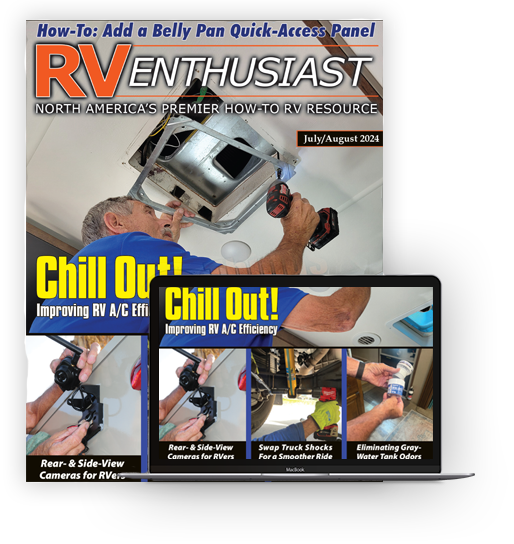Small Tips, Big Results
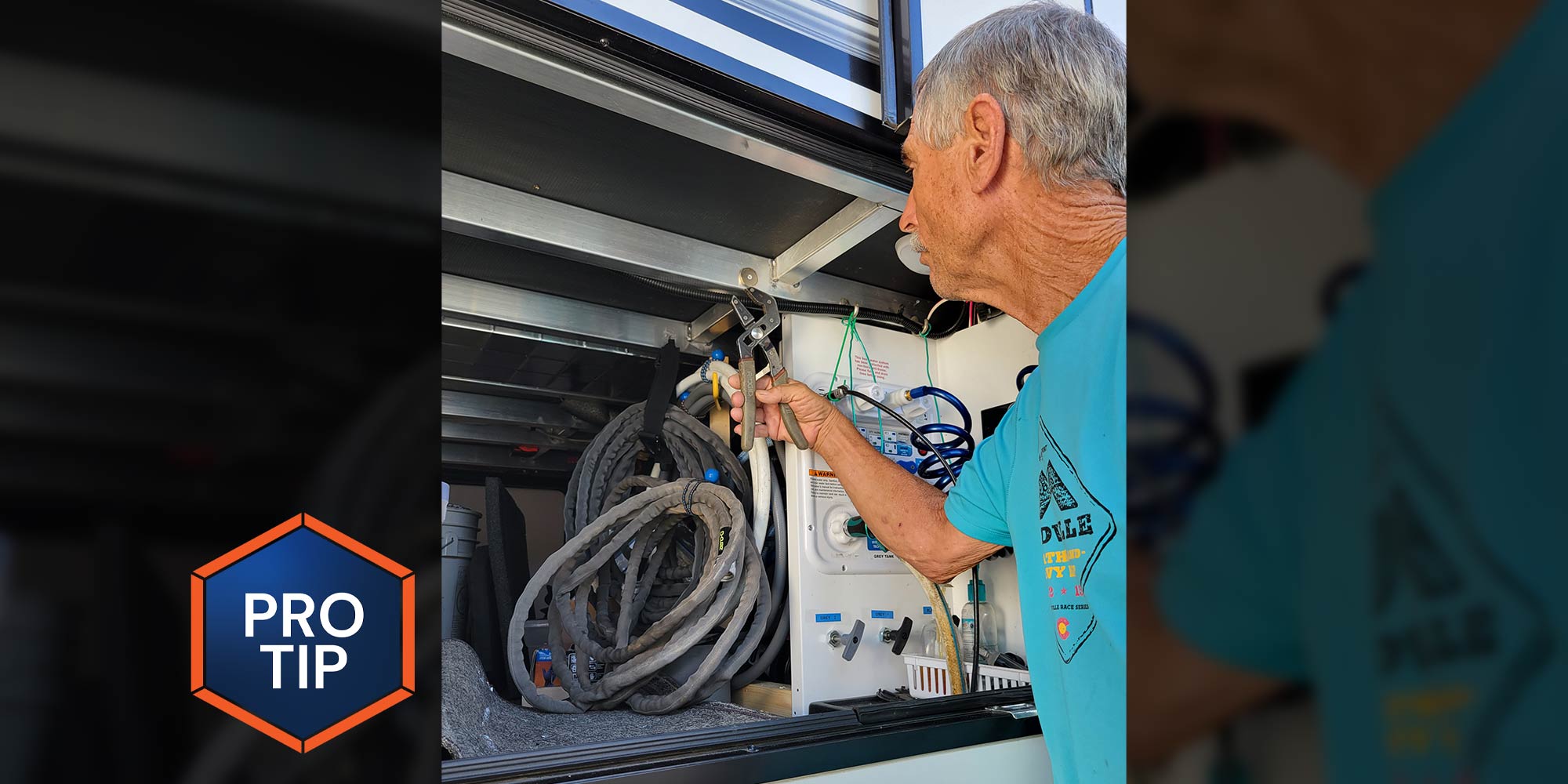
As an RVer, coming up with new ideas and sharing them with fellow enthusiasts is a rite of passage.
My obsession with finding ways to make tasks easier and more convenient has led to countless ideas and projects that have been implemented over the years. Although sometimes not possible, I relish having things readily accessible but are also stored neatly. So, I’m constantly building “systems” to store tools, supplies, chairs and the barbecue, to name just a few areas where improvements come in handy.
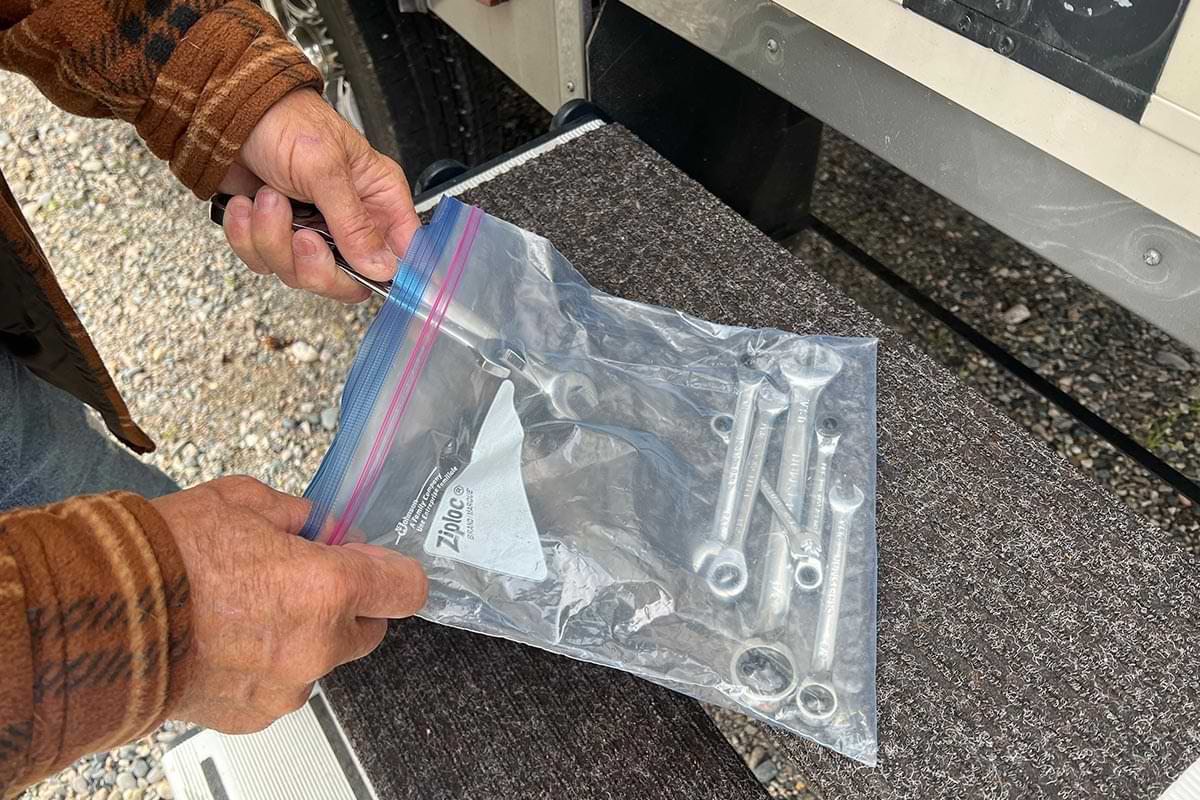
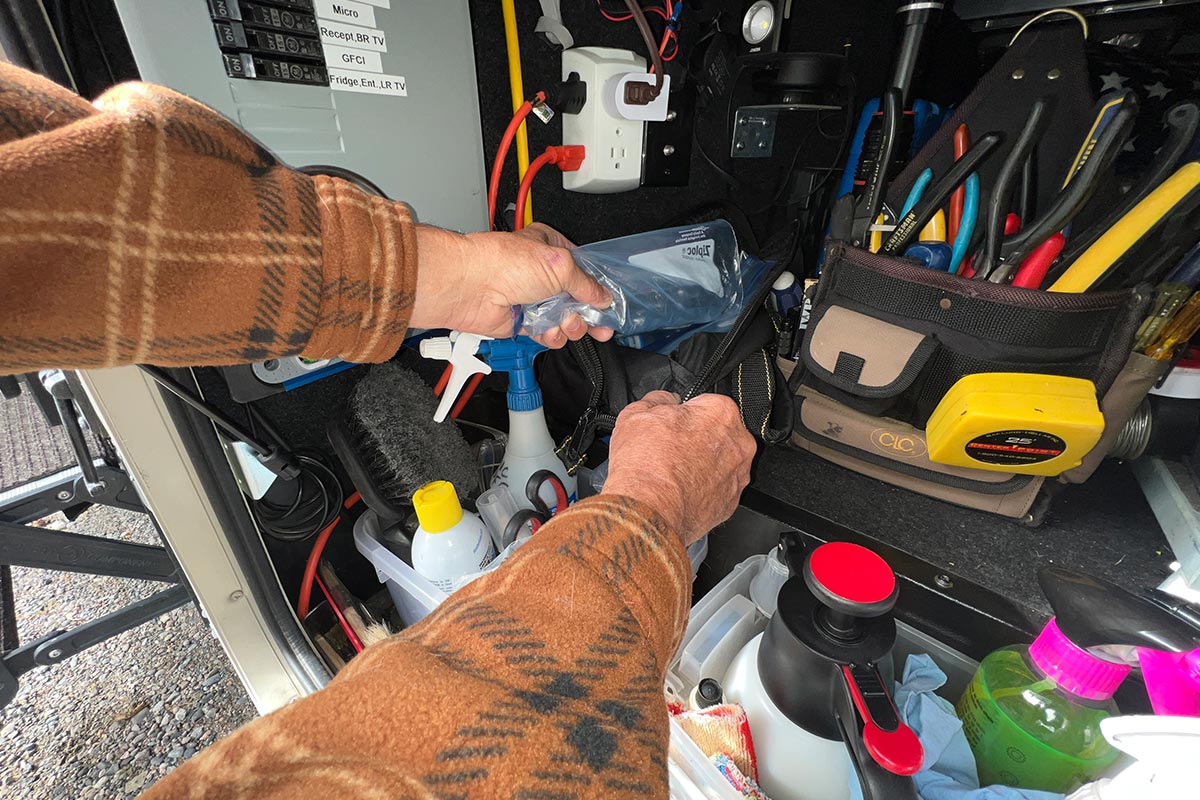
Here are a few other “quick tips” that might make their way into your own bag of tricks.
Making the Connection
Hooking up a sewer hose commonly leads to frustration, starting with the sewer inlet at or near the hookups. It’s almost comical how many sewer inlets are configured for something other than standard sewer-hose fittings — and the rub is that most RV parks require tight connections to prevent sewer gas from escaping.
Bunged-up threads are common, and when a previous resident tightens the inlet cap more than necessary, getting it off by hand can be painful. A 12-inch offset pliers is the logical tool to help remove the cap, but mine was always tucked away in the toolbox. Now I keep the offset pliers mounted to the front aluminum rafter in the pass-through compartment using a strong magnet fastened to the rafter for super quick access.
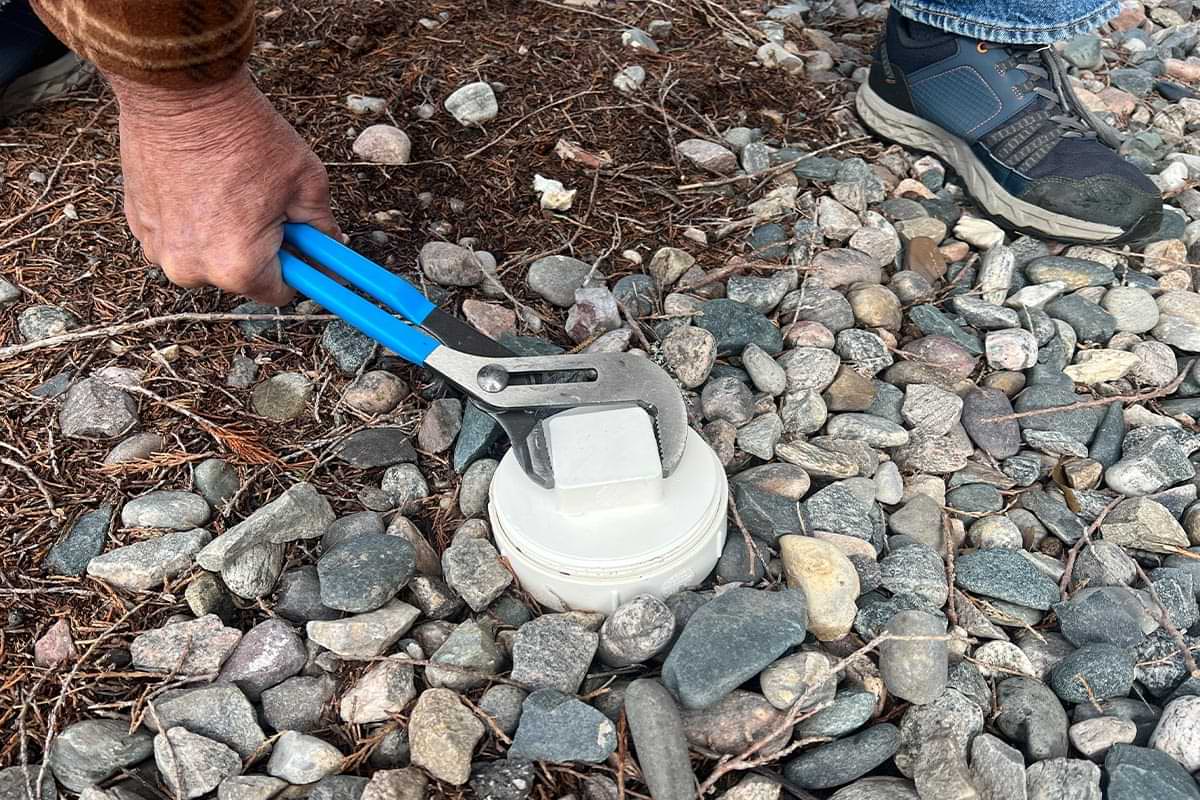
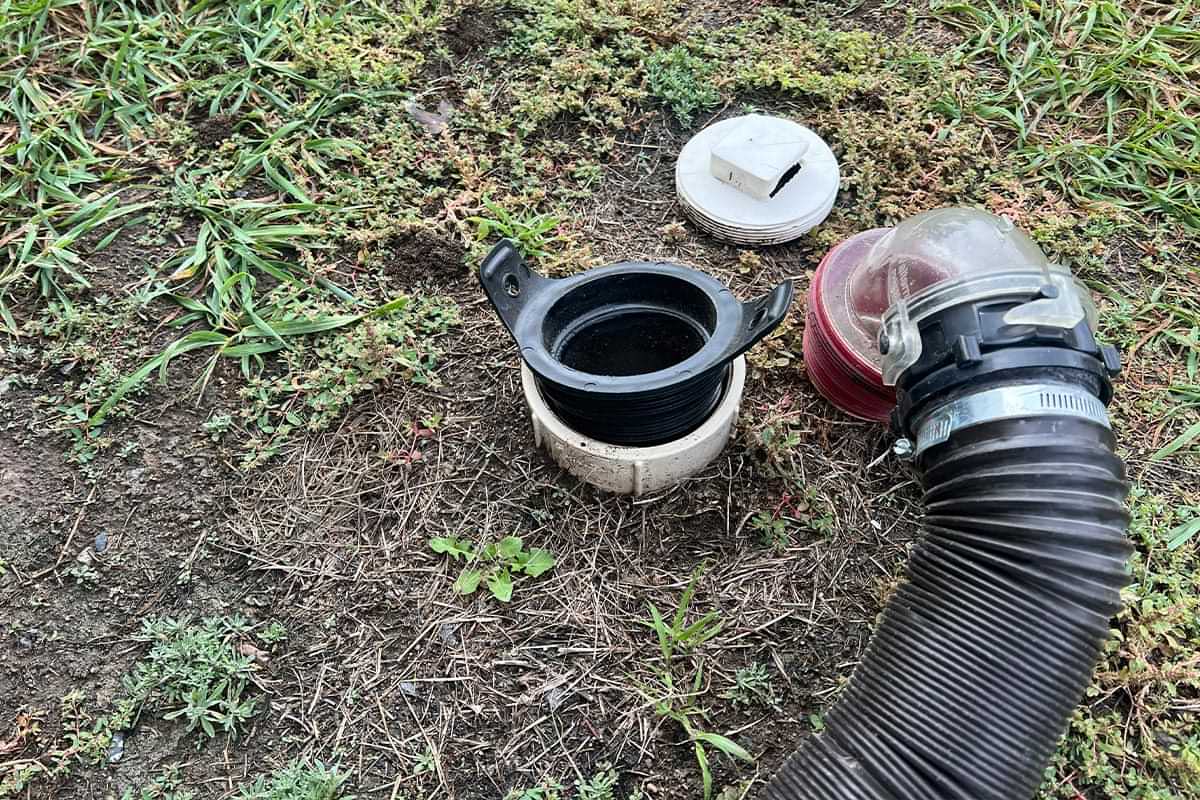
Also, many RVs have dump valves and sewer-hose connection points in two locations — which means using a “Y” fitting to connect two hoses. If the second outlet only drains gray water, consider using a cap with a standard male hose fitting whereby a water hose can be connected and routed to the sewer outlet. Since it’s best to drain the water when the tank is almost full, all you have to do is put the hose end into the sewer inlet and open the valve. If you want to get more exotic, consider installing a water hose connector into the sewer-hose fitting.
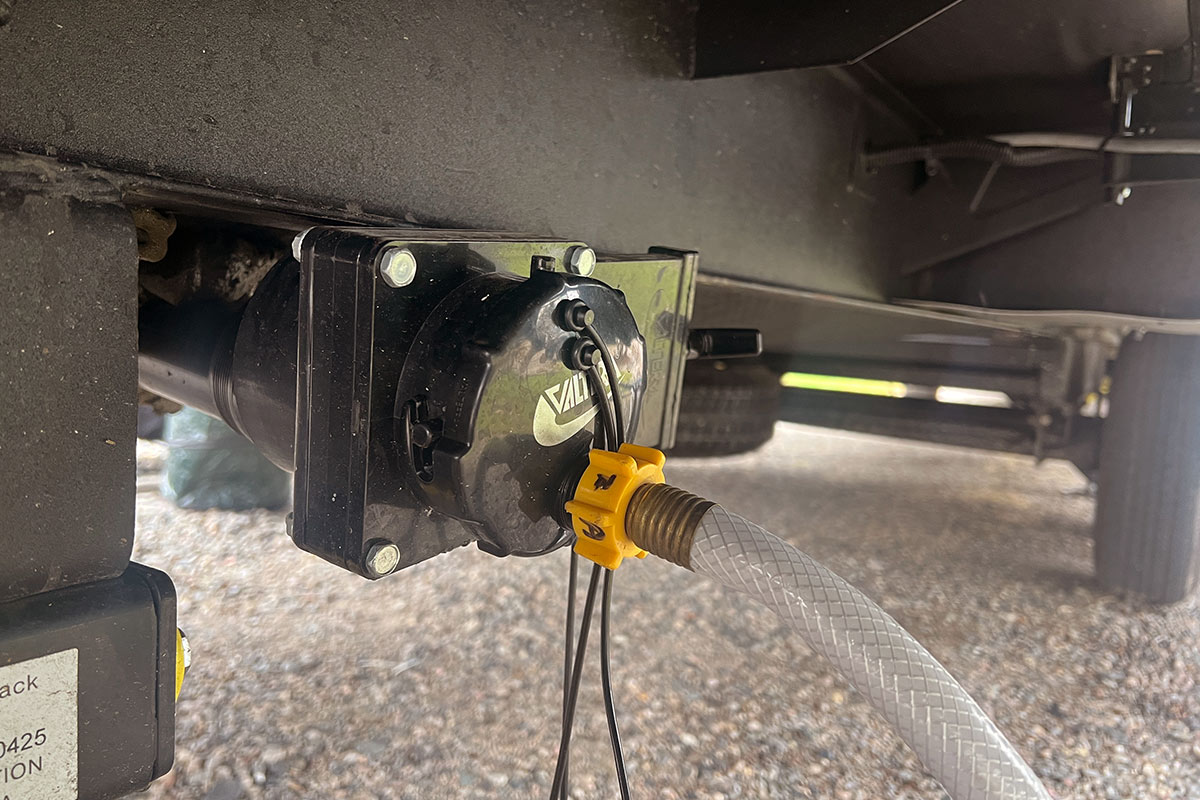
When finished, put the sewer hose back in place immediately to control odors. Just make sure to only use a water hose dedicated for this purpose. This type of cap can be found in most RV supply stores and online, in black and clear iterations.
Fill ‘er Up
The fill inlet on diesel-powered Ram trucks has a spring-loaded flapper seal and a cheap plastic cover to prevent debris from entering the tube between fill-ups. This cap is a joke and can be easily damaged or lost. A simple way to close off the filler is to adapt a pipe plug designed for pressure testing. You’ll need a 1 ½-inch pipe plug — the Oatey-brand plug sold at Home Depot ($5.65) works perfectly. It has a plastic body, and the rubber gasket expands to seal off the opening by tightening the wing nut.
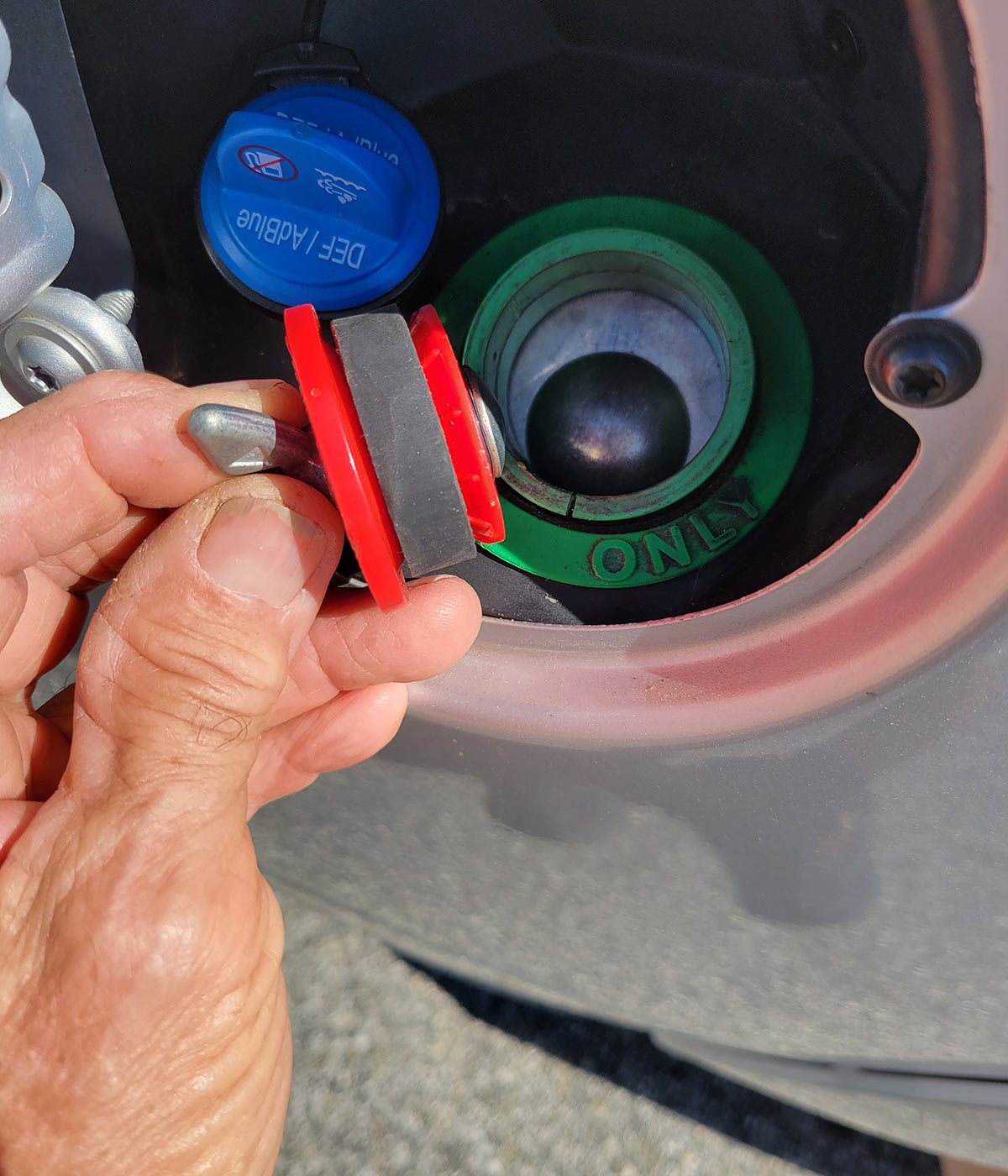
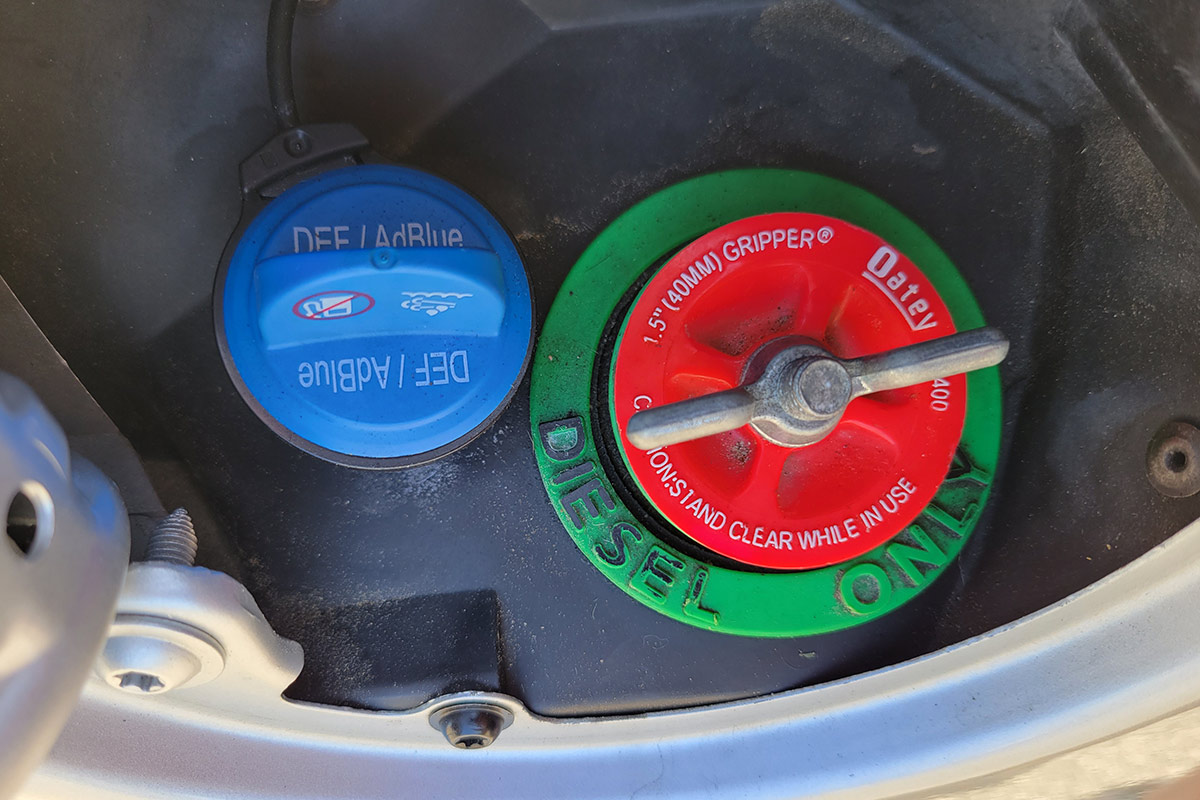
There are other pipe plugs on the market if the Oatey plug is not available, including those that have a metal body, which is not necessary. My pipe plug has been in service for five years and is still working fine.
Screw It Down
Patio mats are a great complement to any patio — but when spreading one out on dirt or gravel (most RV parks prohibit its use on grass) they usually have to be staked down to prevent the material from sailing away (or at least folding up and presenting a trip hazard). Tent stakes are the norm, but a fellow RVer, who happened to be a home builder by trade, drives long screws and washers — using a cordless screw gun — through the end grommets and into the ground. Most times 4-inch screws will suffice — and it sure beats pounding in tent stakes that can bend and require a crowbar for removal.
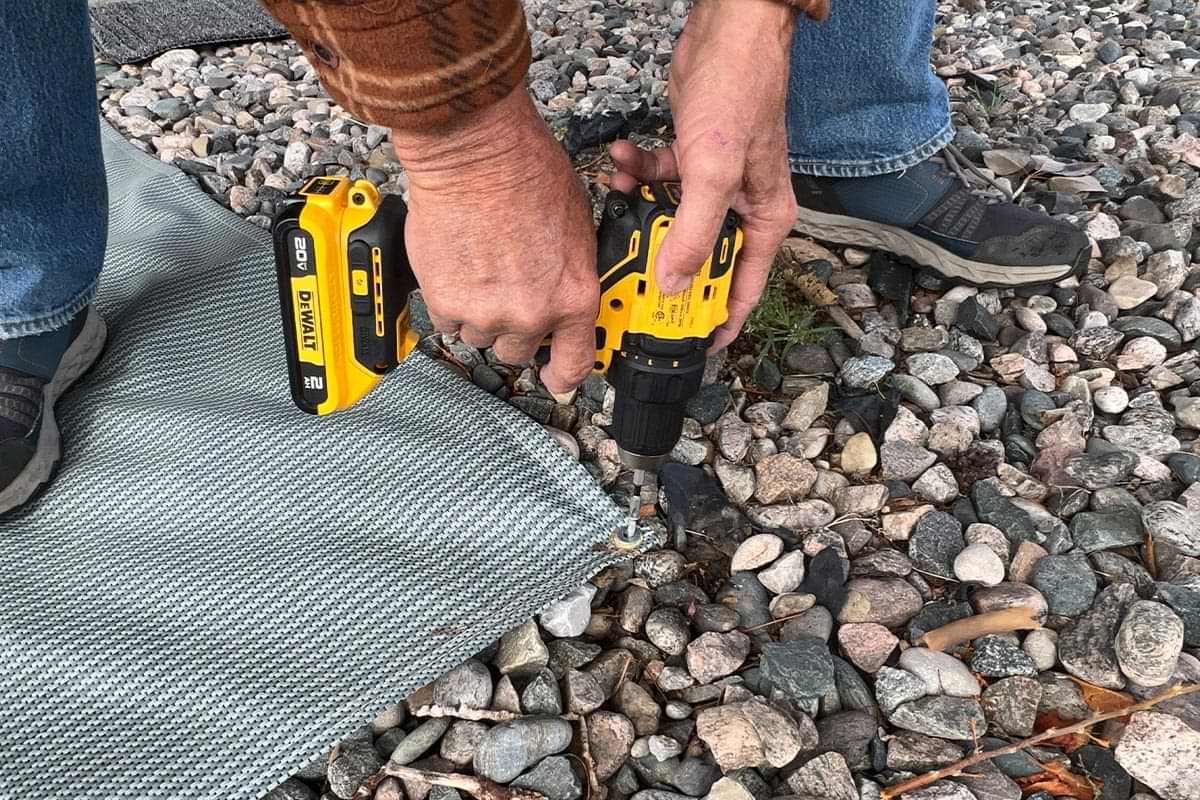
On the Rocks
Just about every RVer relies on ice (cubed or crushed) to cool down water and drinks. Ice is certainly readily available, but we’re forced to buy at least a 5-pound bag — and many times a 10-pound or larger bag of ice. Having limited freezer space, we often had to throw away most of the ice after filling our cups. Obviously throwing away ice was a waste of money.
The solution was to purchase a portable ice maker, since our freezer was not equipped with such a provision. Ice makers are commonly found for less than $100 at stores like Walmart and/or Sam’s Club. The brands and color differ, but essentially they are identical products. We use the ice maker almost every day and it travels under the dinette table when the road. It does take up space on the counter, but the convenience is worth the sacrifice. Once water is added to the reservoir, the first batch of ice takes around 10 minutes. Most of these machines are said to make 26 pounds of ice a day, but unless you want to babysit the machine all day, that number is not really practical. This summer we’re traveling with three other couples, and we are the daily ice dispensary for the whole group.
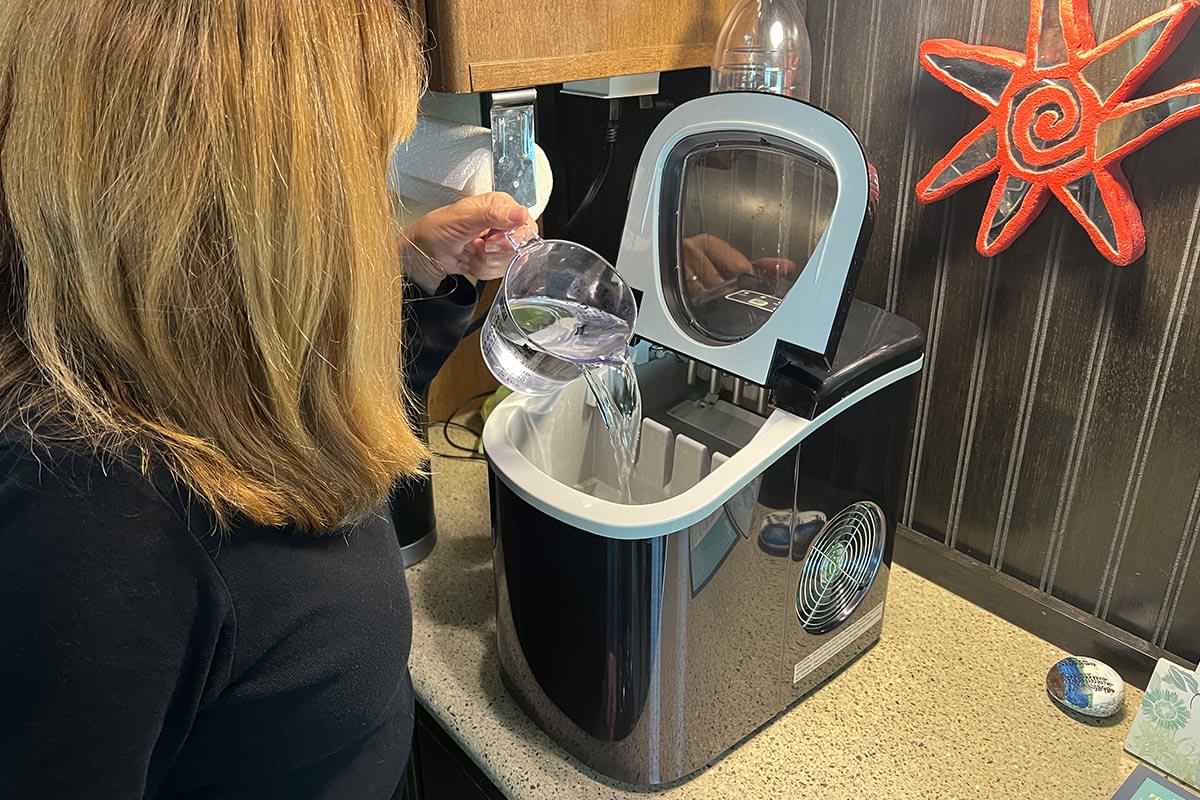
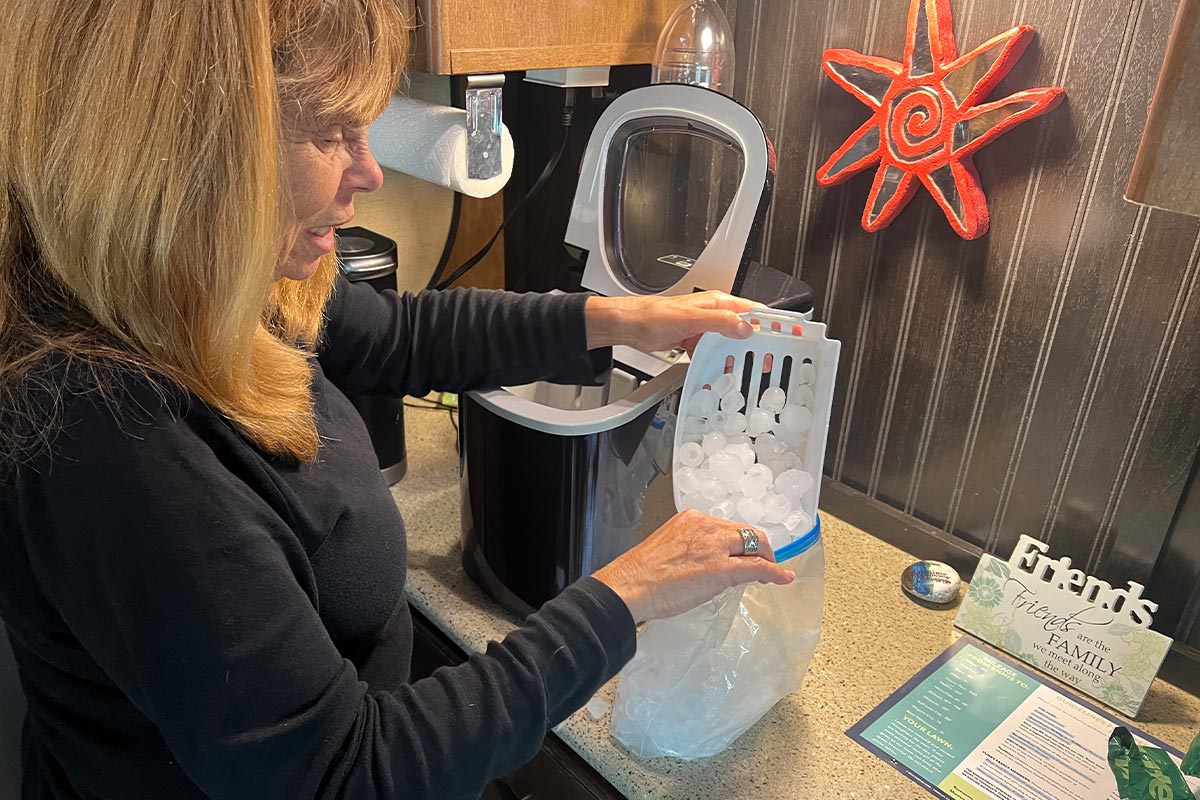
If the ice maker is used continually, figure on it lasting a year or two, but it’s still cost-effective, especially for full timers.
Another benefit of having the portable ice maker is the ability to use purified water from our onboard water filtration and sanitizing systems.
Discovering tips from other RVers is always fun and can even spur spirited conversation when gathering around the fire pit. It’s amazing how resourceful RVers are — and trading tips is always safer than discussing politics.
Already a Subscriber? Click here for Access to the Full Issues.

